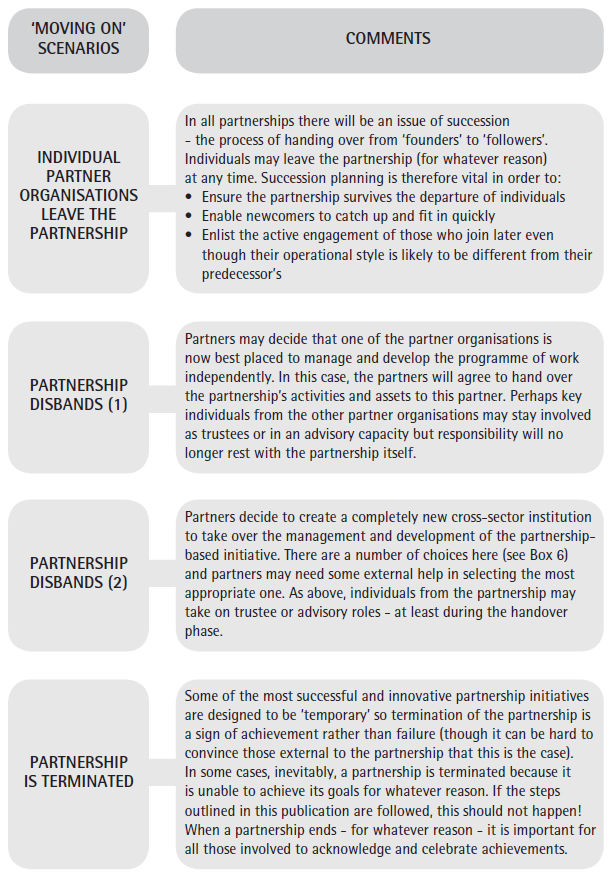 |
|||
PARTNERSHIP TRANSITION, ENDING, AND RENEWAL |
|||
Transitions and endings are processes that occur in most partnerships; even most great partnerships come to and end. The important thing is knowing when the end is coming or already here. "Have an open and honest discussion with your partner(s) to understand when a coalition is transitioning into a stage of renewal or ending. Every partnership relationship is different. What motivates and engages each organization or individual to participate and to continue working collaboratively is different. Properly assessing your situation will help determine the best course of action. If people are bored or burned out ask, “Is the work of this group done? If not, then why are people feeling this way." (Strengthening, 2010). MANAGING THE TRANSITION OF THE PARTNERSHIP Others will be anxious that the partnership is not yet ready to move from talk to action. "As with all projects, considerable attention will need to be paid to working out the details and a clear Action Plan is important to give a framework and milestones that all can agree on. It may be useful at this stage to revisit the partnership’s management arrangements, common agenda , and work plans to adjust them if necessary." (Tennyson, 2011). |
|
||
MANAGING THE ADJOURNING OF THE PARTNERSHIP
|
|||
|
|||
REFERENCES Business Growth/Strategy/Business Processes/Practice Management. (2019, June 25). How to change: seven steps to advice business transitions.
retrieved from: CB Staff. (2015, February 18). How to Break Up With Your Co-Founder.Retrieved from: Don't Choose The Path of Least Resistance – Right Your Sails. (n.d.) Retrieved from: Strengthening Nonprofits: A Capacity Builder’s Library (2010). Partnerships: Frameworks for Working Together, Managing Partnerships. National Resource Centers. Tennyson, Ron. The Partnering Toolbook (2011). An essential guide to cross-sector partnering: Delivering Successful Projects and International Business Leaders Forum. UNICEF. (2017).Concluding, Suspending, and Terminating Partnerships. Civil Society Partnerships. Retrieved From: Wood, M. (2020, January 30). 8 Business Exit Strategies for You to Consider. Fundera. Retrieved from: https://www.fundera.com/blog/exit-strategy-for-small-business |
|||
© 2020 Sam Lopaze, a student at Arizona State University - EDU402 |
|||


